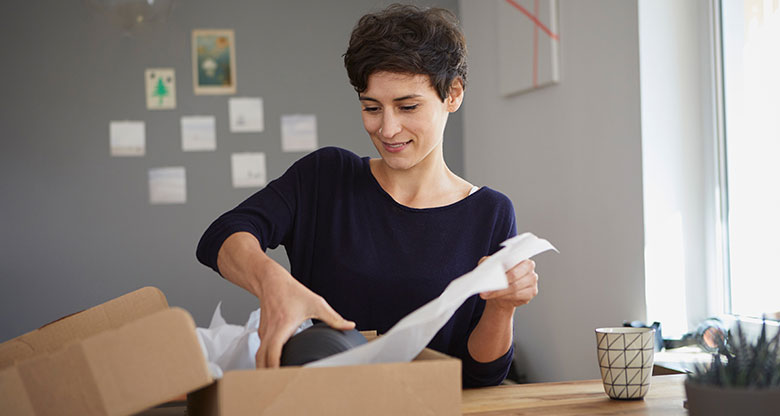What do consumers now expect
Even as physical stores re-open, online shopping remains elevated. But it’s not just volume retailers need to contend with. Many people have recently shopped online for the first time and others have changed the way they shop and receive items. Both have a bearing on consumers’ expectation of the delivery experience.
Australia Post data shows more than 200,000 households bought something online in April for the first time and more than 35% of these purchased more than once. But with everyone at home, new digital shoppers weren’t demanding the same flexibility and control over their deliveries that consumers were calling for pre-pandemic.
That’s changing as people return to work. Australia Post data shows the recent shift in how consumers want to receive their items. In April, 91% of all deliveries went to homes, a 9% share increase compared to the whole of 2019. Alternate delivery options like 24/7 Parcel Lockers and PO Box usage was up 30% YOY as people looked for contactless delivery options close to home. Options like this will become even more in demand as people seek to plan their deliveries around where they’ll be on a given day.
This is confirmed by CommBank research from mid-2019 that showed retailers were focused on getting parcels to shoppers as quickly as possible, while shoppers placed more value on choice around when, where and how they receive their packages.2
Mounting a response
Australia Post General Manager, Parcel and Express Services, Ben Franzi, explains the last mile experience begins at the checkout. Ben says that means being upfront about postage costs, setting the right free shipping thresholds, and clearly communicating delivery times and returns policies to set expectations.
“While speed is important for today’s shoppers, their focus has sharpened on predictability of delivery,” said Ben.
“If they place an order on Monday, they’re happy to wait for the delivery until Thursday if they’re told that when they make the order. This is information is critical because it allows shoppers to decide where they want that parcel sent based on where they’ll be on Thursday.”
“Australia Post does provide options to redirect the delivery once the item is sent, but this inevitably lengthens the delivery time, so it’s much better for shoppers if they’re afforded that control upfront,” he continued.
Jethro Marks, Co-founder and Director of online marketplace, The Nile, said that he is now focused on providing more delivery options in the cart for shoppers, but reliability is crucial.
“In the earlier stages of the pandemic, even if we had more delivery options in the cart, we would have switched them off to increase reliability. We saw a lot of retailers remove their express shipping options, because if it takes two days for an item to leave the warehouse that’s not express, and you risk failing the customer and they may not return
“Our aspiration now is to give customers more flexibility with the delivery options and we have started monitoring the performance of our delivery partners at a suburb level to ensure consistency.”
Optimising the Last Mile experience
CommBank research in mid-2019 showed that at the time, more than half of retailers outsourced some or all of their delivery service functions, and one third of them outsourced fulfilment. Those that did were more likely to offer greater choice such as tracking and the ability to select delivery windows.2
The same research found that only one in four retailers focused on the relationship with their suppliers to optimise delivery services. Ben Franzi says that working closely with logistics and fulfilment partners is more important than ever, noting that transparent communication and data sharing can help retailers.
“For the customer if they’re expecting a parcel they don’t see the retailer and delivery providers as two separate entities, they’re just two sides of the same coin. This is why it is so important that retailers are working closely with their logistics and delivery partners.”
“The ultimate goal is for the customer experience to be seamless and hassle free regardless of how many companies are involved in getting the item from the virtual shopping cart and into the customer’s hands,” said Ben.
The importance of a collaborative approach was echoed by James Alt-Graham, Director of GRA Supply Chain Consultants when he spoke to CommBank in mid-2019.2
“In shoppers’ minds, logistics suppliers are an extension of the retailer and part of the customer experience, so it is an important relationship.” James said.
“Formal quarterly reviews with a logistics partner to discuss what is working and changes on the horizon, such as an expectation for variations in basket sizes, are critical yet often insufficient effort goes into them.”
So, many retailers have stepped up to meet surging demand for online shopping to give house-bound consumers an improved last mile delivery experience. From here, shoppers will start demanding more control over delivery times, locations and speed. That presents an opportunity for retailers to work with delivery partners and align with customer preferences, if they don’t, they risk losing hard-fought customer loyalty created during the coronavirus crisis.



